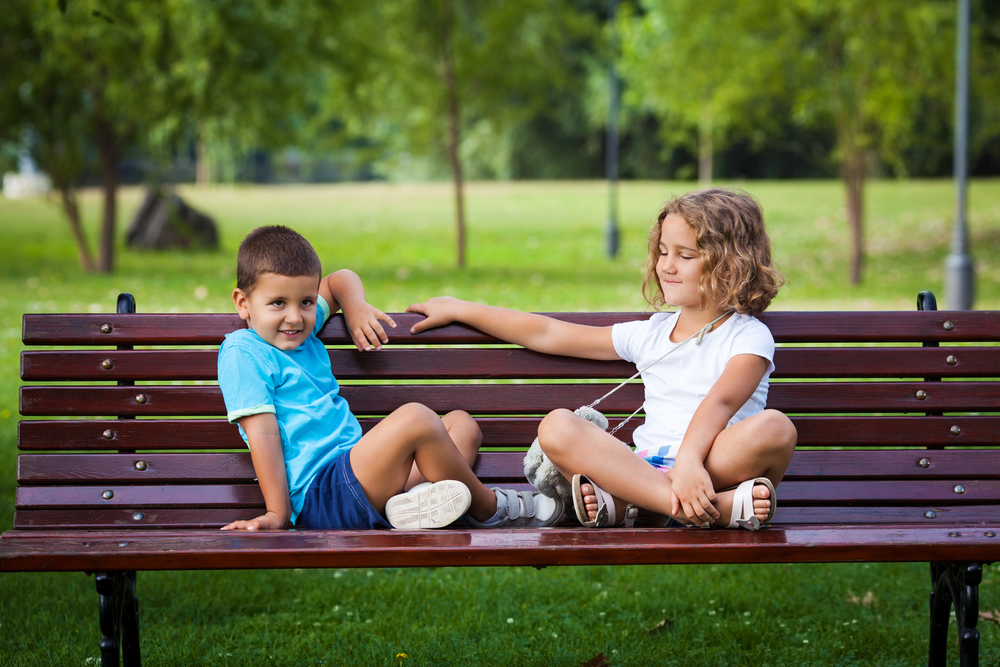Children start to become aware of gender at around the age of two years old.
By the age of three most children know whether or not they are a boy or a girl and have an understanding that this is something that is fixed. A gender identity is developed from around this point as children begin to understand what it means to be a boy or a girl and how one differs from the other. At this point children begin to develop stereotypes which they apply to themselves and others as they try to understand who they are and how they should behave. These become ever more fixed, becoming fairly rigidly defined by the age of around seven. It is not anatomy that makes gender, it is the identity that comes from being a boy or a girl.
This development of gender identity is important because it shapes children’s attitudes and beliefs about themselves and those around them as well as influencing their life aspirations. In the following video, it is unsettling to see how fixed these children’s ideas of gender is. At this young age they have fixed ideas of how boys and girls should behave and what roles in life they “should” perform.
You might wonder why this matters. A recent survey of boys in Canada showed that despite 91% of men thinking that gender equality was a good thing for both sexes and 96% believing that girls should have the same opportunities as boys in their choices; defined gender roles were still in place with 30% believing that a women’s most important role was to take care of the home, 48% believing that the man should be the main breadwinner, and 45% believing that to be a man was to be tough1. This doesn’t sound very much like gender equality to me where despite the survey respondents believing that women should have opportunities and choice, they also believed that certain paths should be chosen. This can be as damaging for boys as well as girls in trying to live up to what they believe their gender to be.
- shape their attitudes and beliefs related to their development of interpersonal and intrapersonal relationships,
- access to education equality,
- participation in the corporate work world,
- as well as stifling their physical and psychological well-being.
So where do these gender messages come from?
They are all around us from the way that parents, families, communities and schools can encourage certain sorts of play or dress or behaviour. It can come in the form of praise for physical play for boys and praise for playing quietly and gently for girls. It can come in the giving of certain toys which then dictates the child’s play, whether dressing a doll for a girl or playing at being a soldier for a boy. As children enter the wider world, these images are everywhere and have become ever more entrenched in recent years as toy companies desperately market and advertise their products seeking parents and children to part with their money. This continues for children all the way into adulthood and during this time they are receiving subliminal messages through advertising which propagates traditional gender roles or through expectations that science and maths and building things are the boys’ domain. This is all irrespective of a child’s own talents.
How can we give good gender messages to children?
This is increasingly difficult with the strength and visibility of the media in a young child’s life but there are things that can be done to redress the balance.
- Arrange mixed gender playdates. Don’t just group boys or girls together assuming that they will play better together. This is especially important in the early years in order to establish good relationships with girls and boys.
- Read books that show girls and boys taking on differing roles at home, in the workplace and within childhood.
- Don’t stand for bullying or teasing based on gender and never use “Don’t be such a girl” to try to change either a boy or a girls’ behaviour. Instantly they can see that there is an inferiority associated with it.
- Think about the toys you give children. Do they encourage the child to play only in a certain sort of way? Provide choice and balance. Encourage exploration of numerous activities without gendering them.
- Think about the tasks or jobs you give children to do. Do you split things equally between girls and boys? Do girls take on gardening or mending jobs and do boys help with cooking and cleaning?
- Let both boys and girls express their emotions and feel that it is ok to cry.
- Urge both boys and girls to be independent and problem solvers and not passive, waiting for someone else to help them.
- Attribute compliments to achievements and abilities rather than appearance.
- Limit media consumption especially adverts and once children are old enough, talk to them about what they are seeing and how it represents people.
Do you think that negative gender messages are on the rise? How do you provide positive messages to your sons and daughters? We would love to hear your thoughts.























